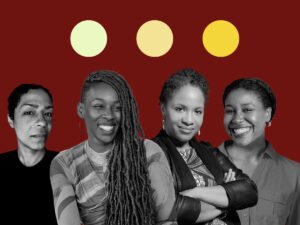
June 8, 2017; Washington Post
“The Status of Black Women,” a new report from the Institute for Women’s Policy Research (IWPR) and the National Domestic Workers Alliance (NDWA), provides an in-depth look at the how Black women are faring, economically, politically, and in terms of health and social well-being, across the United States.
The report begins with a foreword by Alicia Garza, Special Projects Director for the NDWA, who places the continued economic insecurity of Black women in the context of the legacy of slavery. She explains that the overrepresentation of Black women in domestic occupations is part and parcel of their historic roles as enslaved women “tending to white families as wet nurses, cooks, housekeepers, and caregivers.”
This legacy has helped white women succeed—freeing them from household responsibilities so they could enter the paid workforce—but left Black women at a distinct disadvantage. As Garza notes, “the people who care for those we care for the most are underpaid, undervalued, and underprotected.”
To understand how Black women’s role in the care economy affects their well-being—and to develop a full picture of Black women’s lives across America—NDWA collaborated with IWPR to analyze available data across six key areas: Political Participation, Employment and Earnings, Work and Family, Poverty and Opportunity, Health and Well-Being, and Violence and Safety. A rich picture emerges, showing recent gains in education, entrepreneurship, and health alongside continued disparities in employment and income that leave one in four adult Black women living in poverty.
Sign up for our free newsletters
Subscribe to NPQ's newsletters to have our top stories delivered directly to your inbox.
By signing up, you agree to our privacy policy and terms of use, and to receive messages from NPQ and our partners.
Report Highlights
Among the report’s most significant findings:
- Black women have high rates of voter participation but are severely underrepresented in political office: though they make up 6.6 percent of the US population, they are 3.5 percent of elected officials in state legislatures.
- Black women earn 64.6 percent of the earnings of white men—$34,000 for a year-round, full-time worker. Black women’s median annual incomes declined by 5 percent over the decade 2004 to 2014.
- Of employed Black women, nearly 30 percent are in service occupations, the occupational group with the lowest wages and least access to benefits such as paid leave or retirement savings plans.
- Of Black women, 80 percent are breadwinners, either single mothers providing for children or sharing significantly in supporting a household with another adult earner.
- Despite the expansion of health insurance coverage under the Affordable Care Act, 16.5 percent of Black women still lacked insurance in 2014, largely the result of states failing to expand Medicaid.
- In 2014, Black women were twice as likely as white women to be imprisoned, with 109 per 100,000 in state or federal prison as compared to 53 in 100,000 white women.
Despite the many challenges to Black women’s security and well-being chronicled in the report, the statistics also show progress in key areas: over the decade 2004–2014, the share of Black women receiving a Bachelor’s degree increased by nearly 24 percent; a surge in business ownership has increased Black women’s share of woman-owned businesses to 15.4 percent, more than their share of the female population (12.7 percent); and overall population health has improved, with a significant decrease in the incidence of AIDS and mortality from heart disease.
Throughout the IWPR report, data is given greater context by comparing the status of Black women to that of women in other racial and ethnic groups, and by highlighting significant differences in key states. Tables throughout include state breakdowns where relevant.
Policy Solutions
The positive trends highlighted in the report, though insufficient to address gaping inequality across our economy, remind us that policy interventions such as the Affordable Care Act can make a difference in the everyday lives of millions of Americans. IWPR thus winds up “The Status of Black Women” with commonsense solutions that, though not particularly new and innovative, would go a long way to providing greater stability for Black women and their communities:
- Political participation: Help more Black women run for office, and ensure that states do not increase barriers to voting through restrictive voter identification laws or diminished access to early voting.
- Earnings: Support a higher minimum wage, union membership (which raises income), and a universal basic income to help families with increasingly volatile and unstable employment.
- Work/Family Balance: Expand paid leave and affordable child care options to help Black women who have family caregiving responsibilities stay in the workforce
- Education: Make higher education more affordable through Pell grants and lower in-state tuitions, and increase opportunities for Black women to enter higher-paying careers.
- Health Care: Expand Medicaid access in states that have failed to do so to ensure that all women with incomes below 138 percent of the federal poverty level have access to affordable healthcare.
- Violence: Improve data collection on Black women’s experiences of violence; address racism and discrimination in domestic violence services; and reform the criminal justice system to address racial disparities.
With a federal budget proposal from the Trump administration that decimates supports for vulnerable Americans, we can pretty much assume that this agenda will not be moving forward at the federal level. That leaves the states—and nonprofits—to lead us toward policies that promote greater opportunity and equity for Black women and all vulnerable populations.—Karen Kahn













